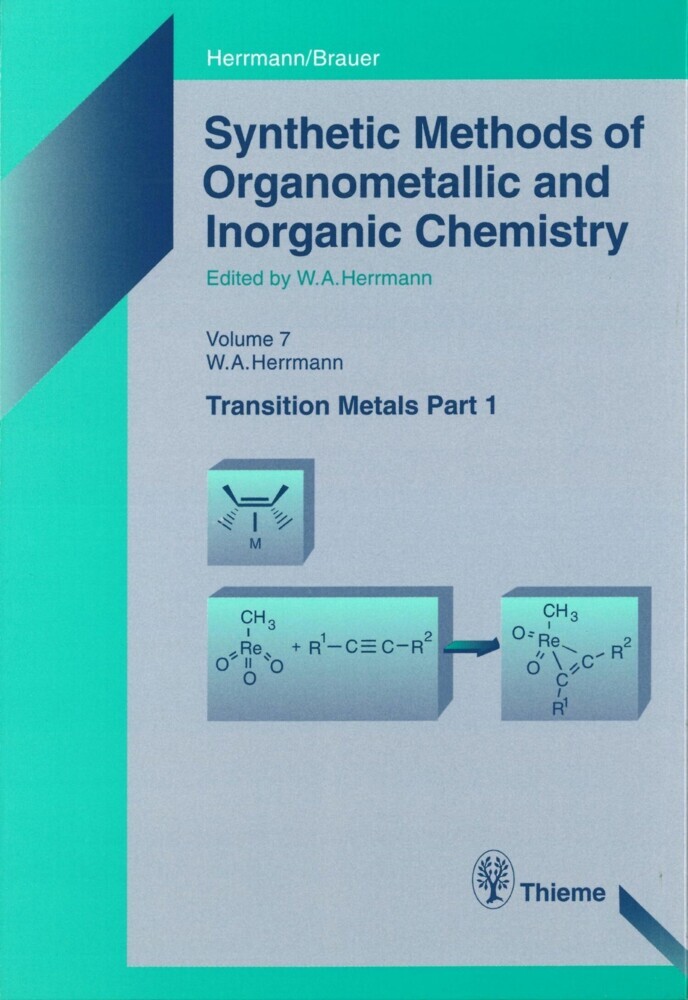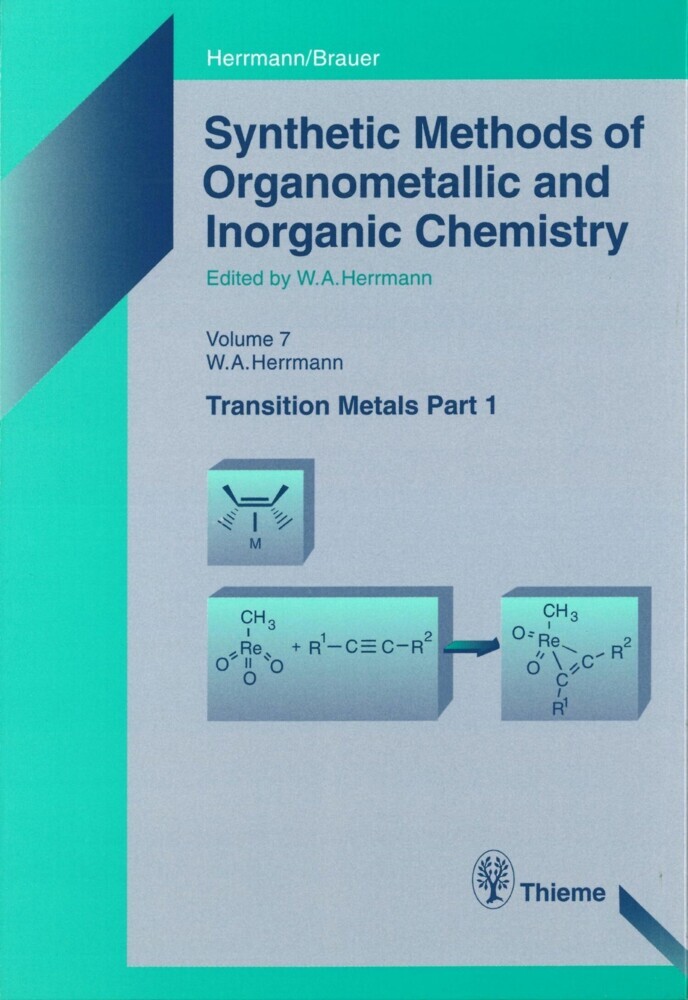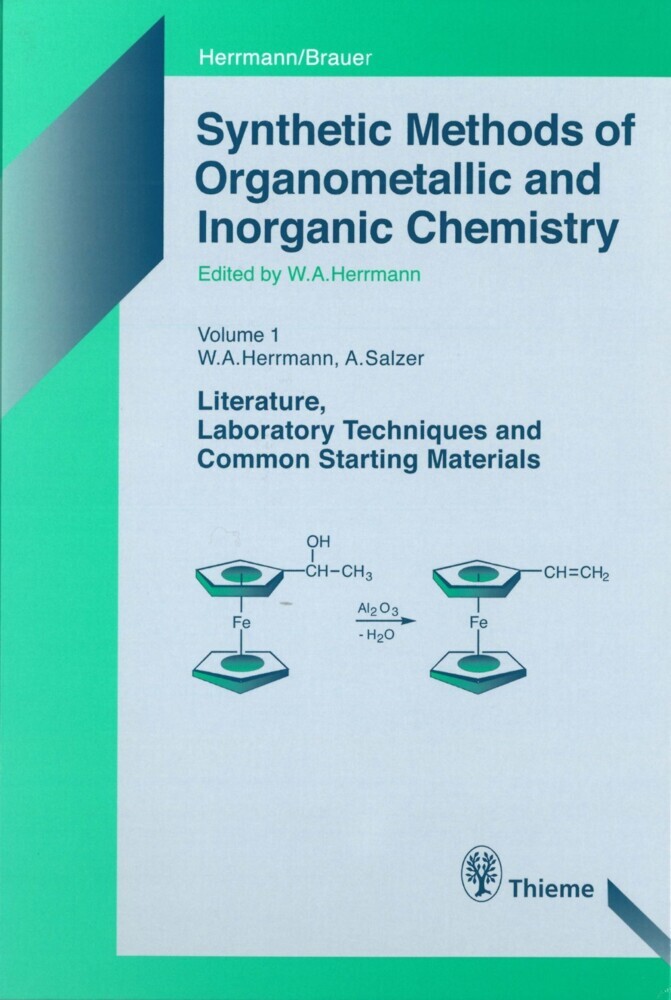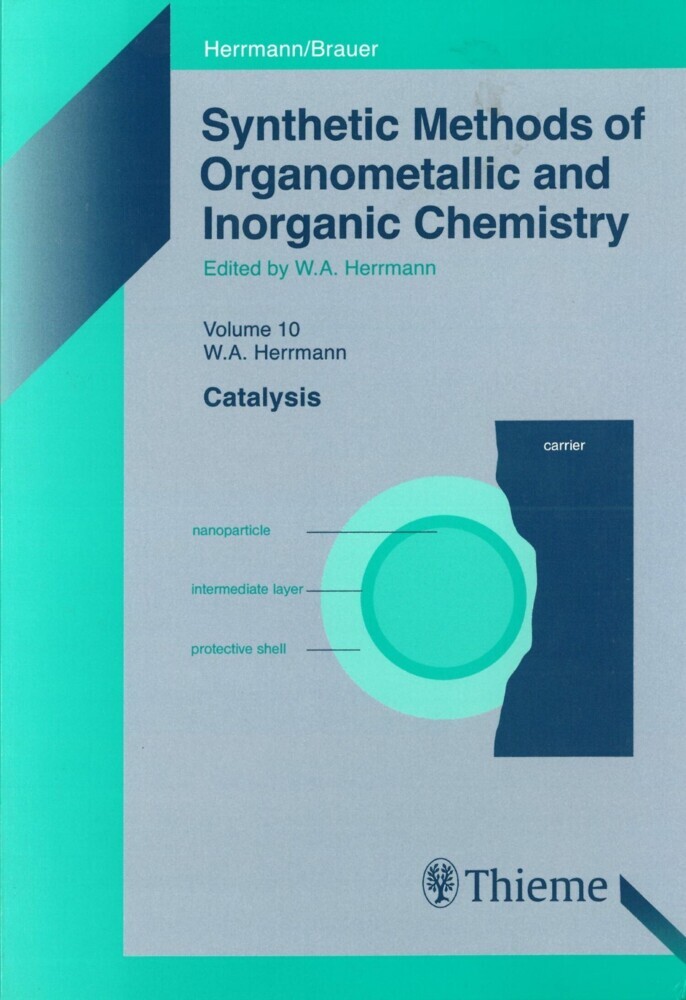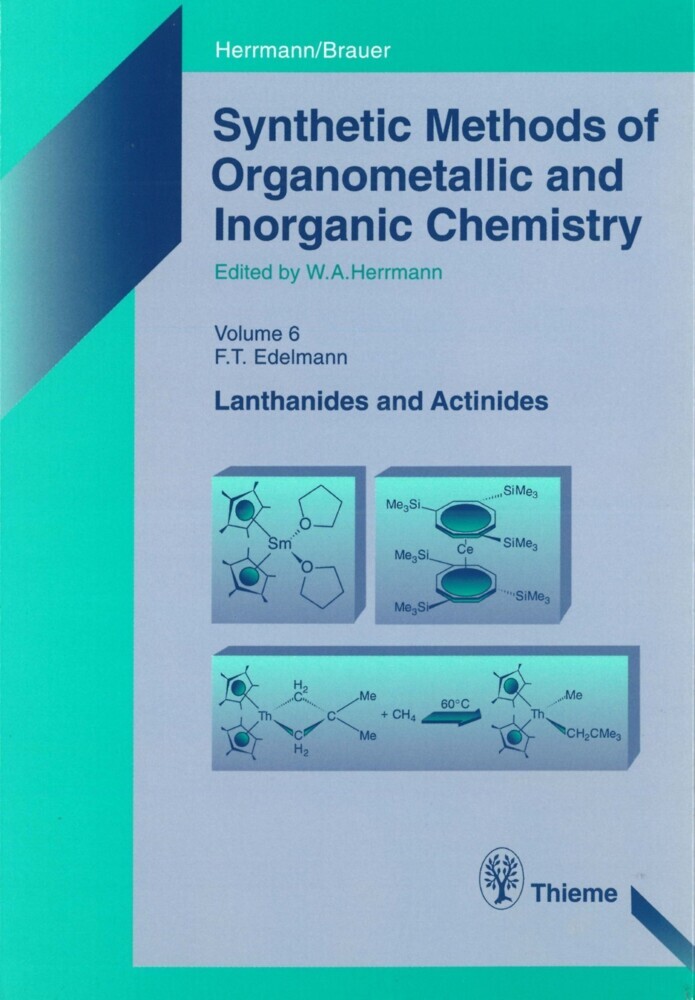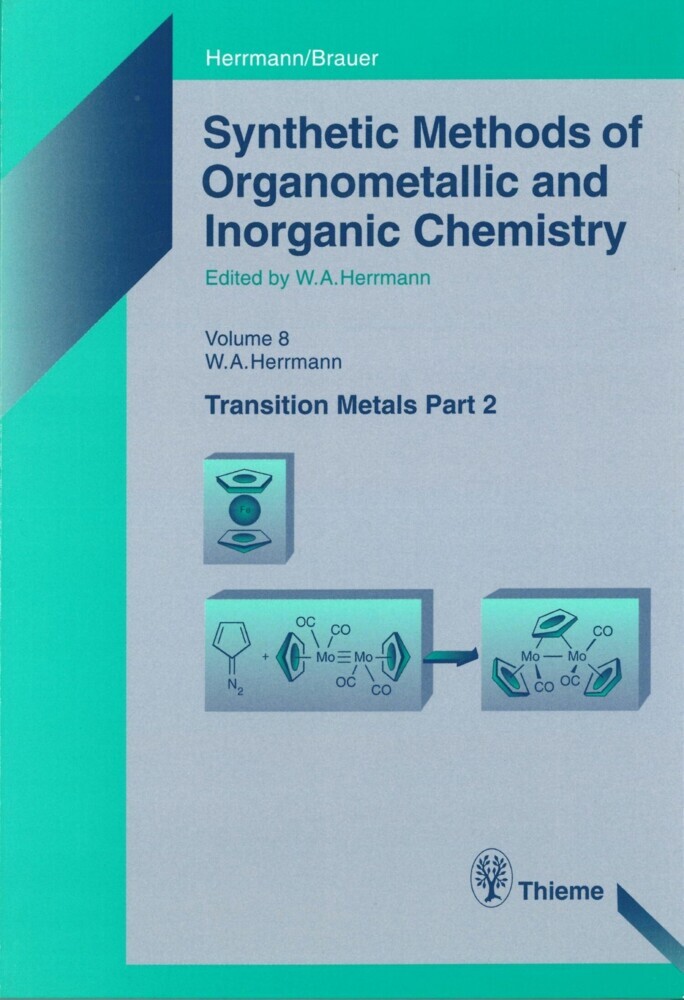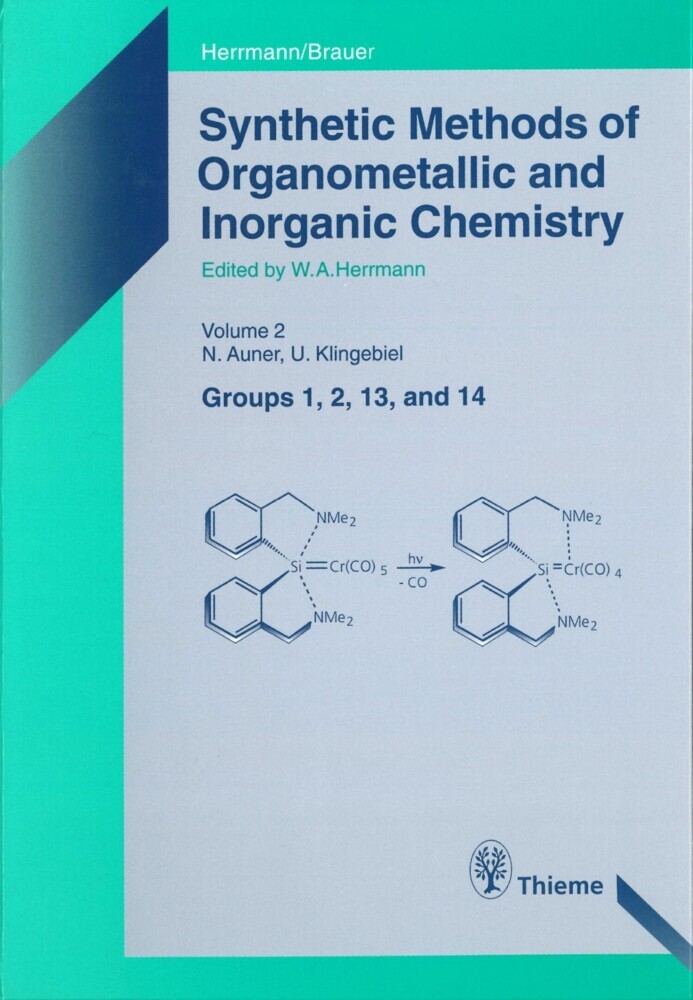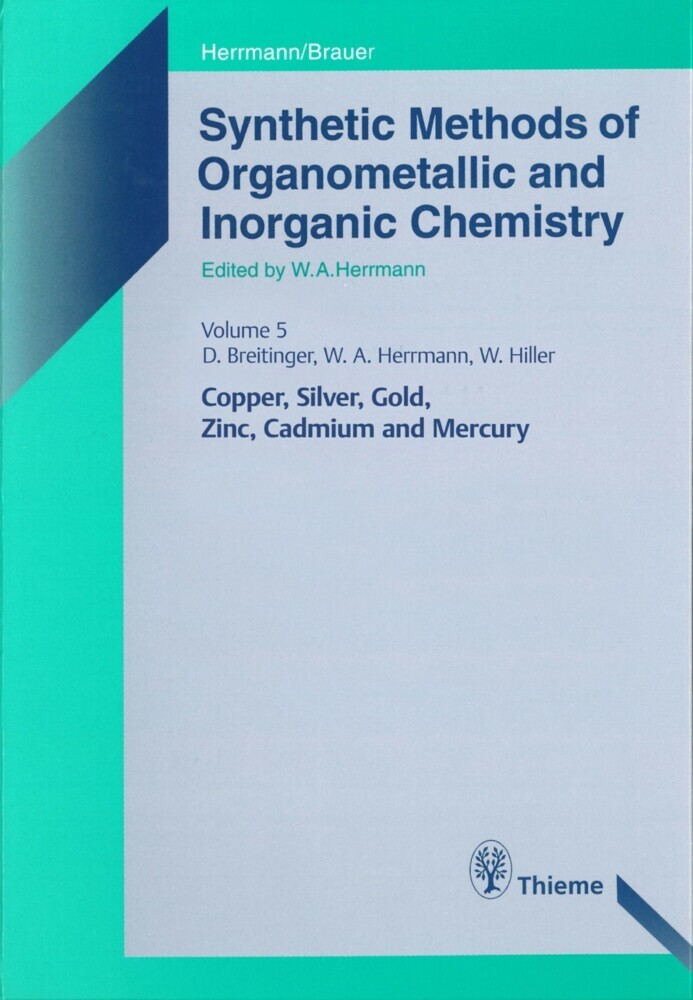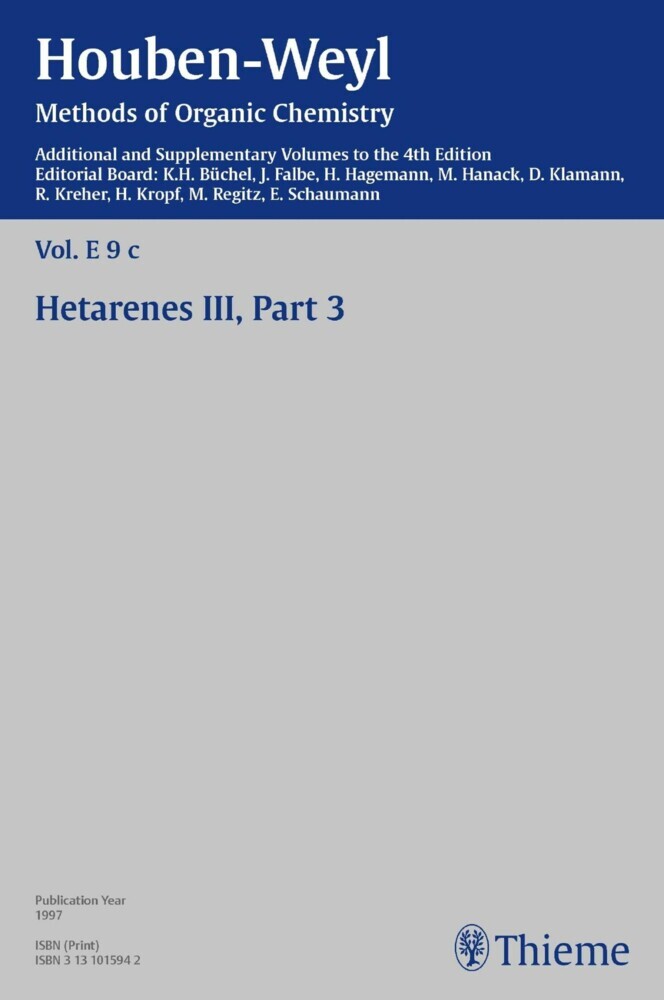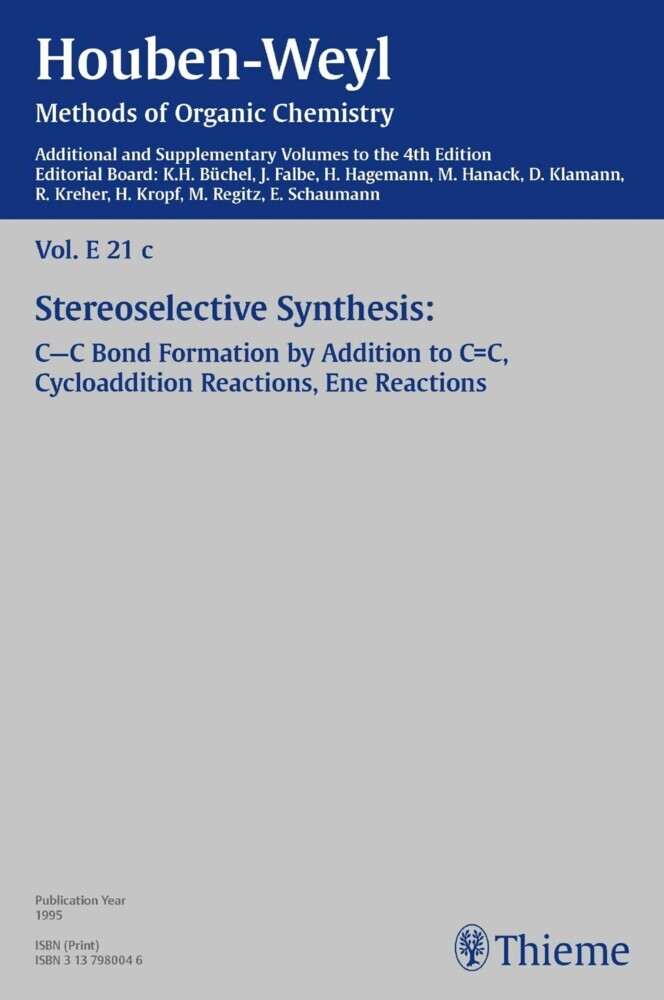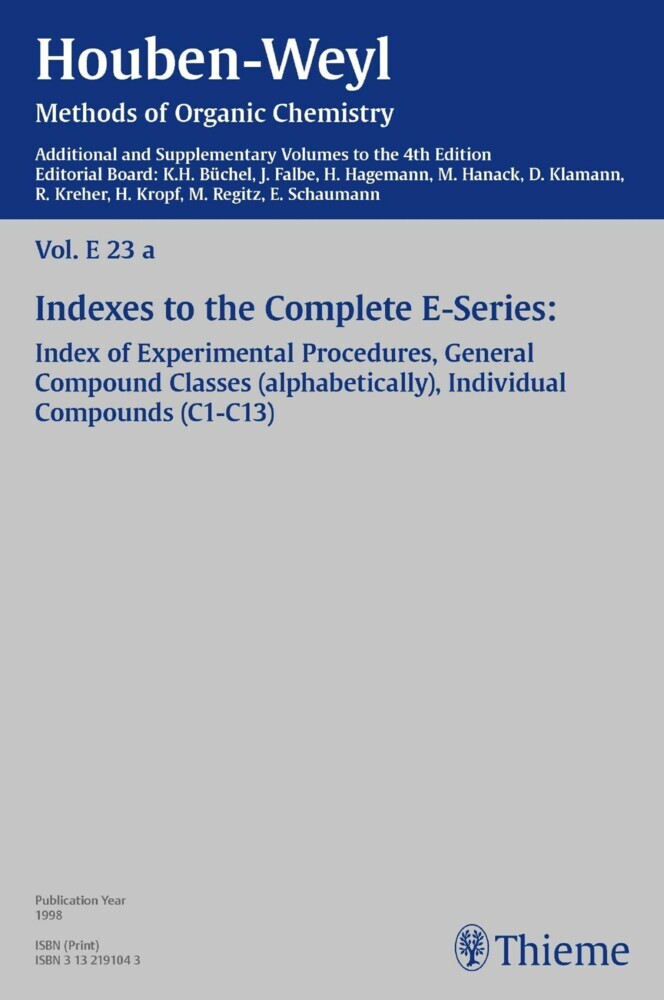Synthetic Methods of Organometallic and Inorganic Chemistry, Volume 7, 1997. Pt.1
Volume 7: Transition Metals Part 1
Synthetic Methods of Organometallic and Inorganic Chemistry, Volume 7, 1997. Pt.1
Volume 7: Transition Metals Part 1
Designed as a benchtop tool, the series includes detailed and reliable experimental procedures for the preparation of common but imp ortant starting compounds, organized according to the periodic table. Properties of the compounds and additional references are also provided. In most cases, no strict borderline has been drawn between inorganic and organometallic compounds. Instead, the material is conveniently presented so that for every group of elements, the various aspects of the chemistry are combined. Several hundred in ternational specialists with established expertise in their respective fields have contributed, resulting in proven and reliable pre parations. In view of the enormous growth of organometallic chemistry, Synthetic Methods of Organometallic and Inorganic Chemistry p rovides you with a balanced compilation of carefully selected and representative examples for all classes of compounds. // The conte nt of this e-book was originally published in 1997.
Wolfgang A. Herrmann, Georg Brauer
Wolfgang A. Herrmann, Georg Brauer
1;Preface to the Series Synthetic Methods of Organometallic and Inorganic Chemistry;6 2;Preface to Volume 7;8 3;Contents;9 4;Chapter 1: Introduction, Working Techniques,Metal Carbonyls, and Other Complexes;11 4.1;1.1 Introduction;12 4.2;1.2 Working Techniques;13 4.3;1.3 Transition Metal Carbonyls and Other Complexes;13 4.3.1;1.3.1 Introduction;13 4.3.2;1.3.2 Metal Carbonyls without Other Ligands;14 4.3.3;1.3.3 Metal Carbonyls with Halogen Ligands;45 4.3.4;1.3.4 Complexes with Hydride Ligands;58 4.3.5;1.3.5 Nitrosyl Complexes from Carbonyl Complexes;65 4.3.6;1.3.6 Complexes with Carbon Disulfide Ligands;71 4.3.7;1.3.7 Complexes with Cyano or Isocyano Ligands;72 4.3.8;1.3.8 Complexes with Phosphane Ligands;78 5;Chapter 2: Complexes with Metal-Carbon s-Bonds;95 5.1;2.1 Introduction 1-3;96 5.2;2.2 Binary Complexes with Metal-Carbon s-Bonds Only;97 5.3;2.3 Alkyl Complexes with Other s-Donor Ligands;99 5.4;2.4 Complexes with p-Acceptor Ligands;102 5.5;2.5 Complexes with p-Donor/Acceptor Ligands;115 6;Chapter 3: Complexes Containing Metal/CarbonMultiple Bonds;136 6.1;3.1 Transition Metal Carbene and Ketenyl Complexes;137 6.1.1;3.1.1 Introduction;137 6.1.2;3.1.2 Titanium, Zirconium, Hafnium, Vanadium, and Niobium Complexes;138 6.1.3;3.1.3 Chromium Complexes;139 6.1.4;3.1.4 Molybdenum Complexes;158 6.1.5;3.1.5 Tungsten Complexes;163 6.1.6;3.1.6 Manganese Complexes;183 6.1.7;3.1.7 Rhenium Complexes;190 6.1.8;3.1.8 Iron Complexes;192 6.1.9;3.1.9 Cobalt and Rhodium Complexes;193 6.2;3.2 Transition Metal Carbyne Complexes;197 6.2.1;3.2.1 Introduction;197 6.2.2;3.2.2 Molybdenum Complexes;198 6.2.3;3.2.3 Tungsten Complexes;204 6.2.4;3.2.4 Manganese Complexes;218 6.2.5;3.2.5 Rhenium Complexes;224 6.2.6;3.2.6 Cobalt Complexes;225 7;Chapter 4: Olefin Metal Complexes;228 7.1;4.1 Introduction;229 7.1.1;4.1.1 The Dewar-Chatt-Duncanson Bonding Model;229 7.1.2;4.1.2 Conformational Preferences of Metal Alkene Complexes;231 7.1.3;4.1.3 Addition of Nucleophiles to Cationic Olefin Complexes;232 7.2;4.2 Alkene Complexes;233 7.2.1;4.2.1 The Hydrido(methanol)bis(triethylphosphane)platinum(H) Cation and itsReactions with Unsaturated Hydrocarbons;243 7.3;4.3 Allyl Complexes;246 8;Chapter 5: Alkyne Metal Complexes;253 8.1;5.1 Introduction;254 8.1.1;5.1.1 Conformational Preferences of Metal Alkyne Complexes 1-4;254 8.2;5.2 Monomeric Alkyne Complexes;255 8.3;5.3 Binuclear Alkyne Complexes;265 8.4;5.4 s-Bonded Alkynyl Ligands ;266 8.5;5.5 Polymers Containing Transition Metals Bonded by s -AcetyleneLigands;267 8.5.1;5.5.1 Polymer Synthesis;267 8.5.2;5 .5.2 Iron and Ruthenium Complexes and Polymers;269 8.5.3;5.5.3 Rhodium(III) and Iridium(III)s-Acetylide Complexes;273 8.5.4;5.5.4 Nickel Polymers;274 8.5.5;5.5.5 Palladium-Polyyne Dimers and Polymers;275 9;Index;281
Herrmann, Wolfgang A.
Herrmann, Wolfgang A.
| ISBN | 9783131792310 |
|---|---|
| Artikelnummer | 9783131792310 |
| Medientyp | E-Book - PDF |
| Copyrightjahr | 2014 |
| Verlag | Georg Thieme Verlag KG |
| Umfang | 304 Seiten |
| Sprache | Englisch |
| Kopierschutz | Digitales Wasserzeichen |

